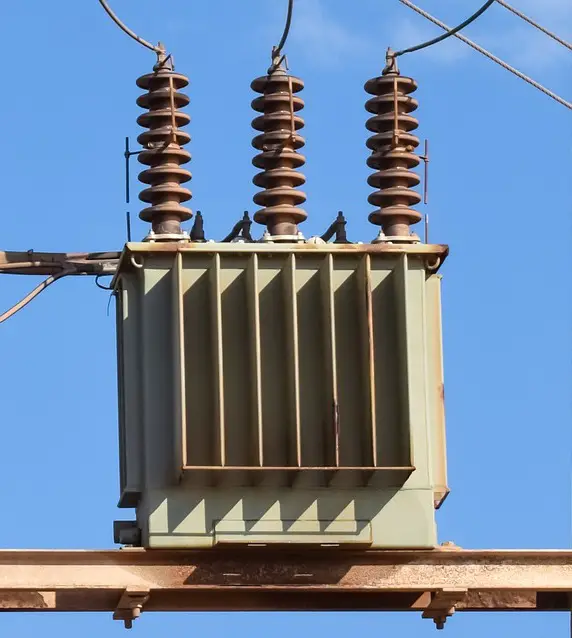Why Transformer rated in kVA not in kW? Explained
 The power rating of a device is the maximum magnitude of power that can be allowed to operate by the device.
The power rating of a device is the maximum magnitude of power that can be allowed to operate by the device.
Active power, Reactive power, and Apparent power are rated in watts (W), Volt-ampere reactive (VAR), and Volt-ampere (VA) units respectively.
Active power = V I cos ɸ, unit is watts or W (power factor, pf = cos ɸ )
Reactive power = V I sin ɸ, the unit is volt-ampere reactive or VAR
Apparent power = V I, unit is Volt-ampere or VA
Apparent power is the resultant of Active and Reactive power. The apparent power value is independent of the power factor or the phase angle of the electrical system.
The power rating of a transformer is rated in kVA (Apparent power) not in KW (active power). The transformer is rated in kVA is due to the reasons like power loss, load type, relation to the amount of heating, etc.
Why motor rated in kW and transformer in kVA?
A transformer is a device that transfers electrical energy into another circuit. Apart from losses, it doesn’t consume any energy or convert it to another form of energy. It can be connected with any type of load or circuit that can be either resistive, capacitive, or inductive. Hence, unlike from a motor, bulb, etc., which has a known circuit path and parameters that make it able to calculate power factor values, the p.f of a transformer or generator cannot be determined by the manufacturer, or it is not known. Because it depends on the type of load that will be connected with the transformer by the user. So without knowing the p.f it is not possible to find the active power rating. That’s why a motor is rated in kW, but a transformer is in kVA.
Transformer power loss and rating
A transformer has two types of power loss, copper loss, and Iron loss.
Copper Loss
Copper loss occurs due to the ohmic resistance in the primary and secondary winding. The copper loss varies with the amount of current through the windings.
Iron Losses or Core Loss
An iron loss in the transformer core occurs due to the alternating flux. It consists of eddy current loss and hysteresis loss.
The copper loss of a transformer depends on its current, and the iron loss depends upon the voltage. Hence, the total loss depends upon the voltage and the ampere, but it is independent of the power factor or the phase angle between them. The winding temperature and oil temperature of the transformer rise with the amount of loss or heating of the transformer. Hence, the temperature rise of a transformer can be considered as it is proportional to the apparent power.
Since the load on a transformer can vary, the load-dependent losses such as copper loss also vary with the type of load. However, losses like core loss are not dependent on the load and remain constant. The instantaneous power through a transformer can vary with respect to the load. The kVA rating of a transformer is a measure of its maximum apparent power output, which includes both real and reactive power, and indicates the maximum load the transformer can handle safely.
How electric supply gives to motor